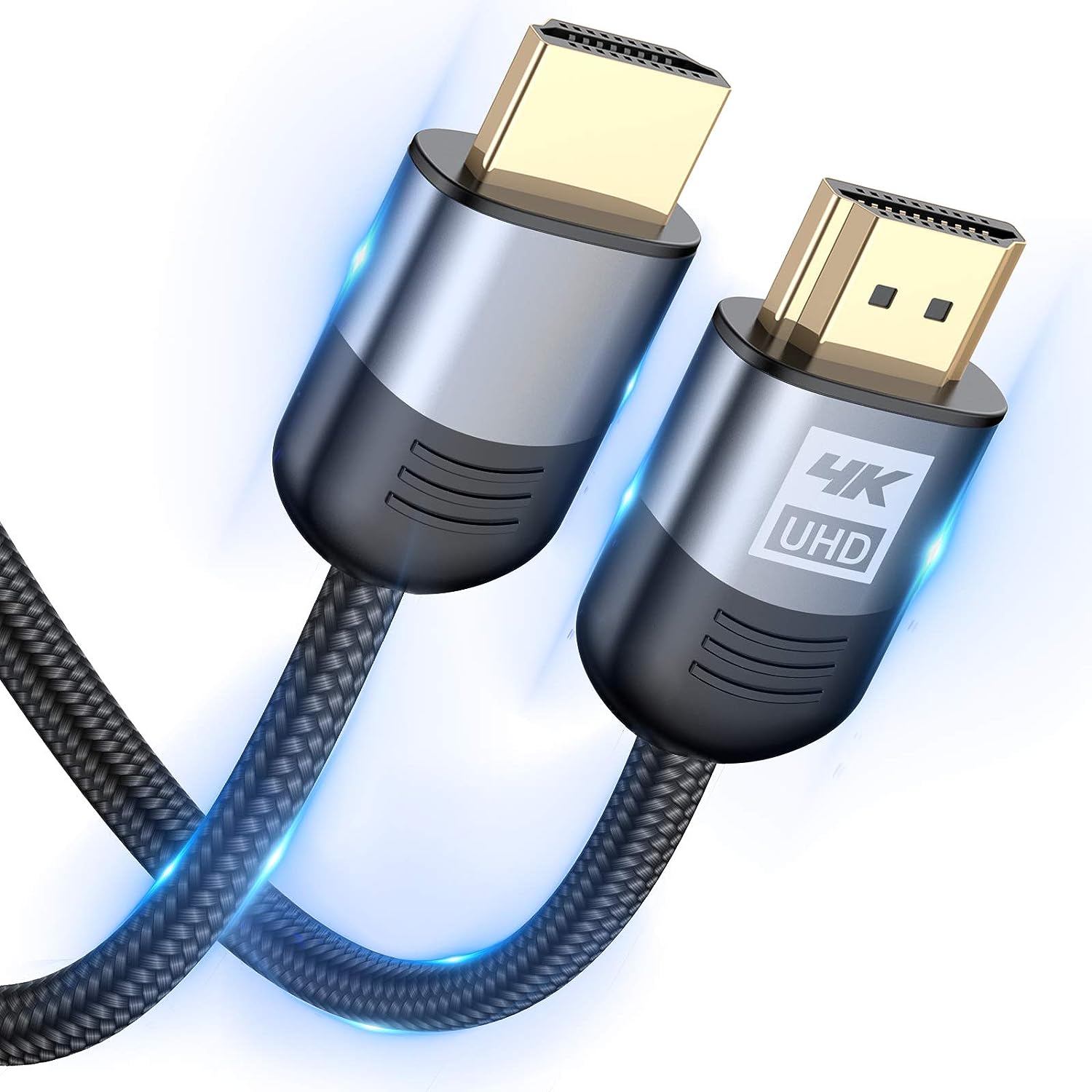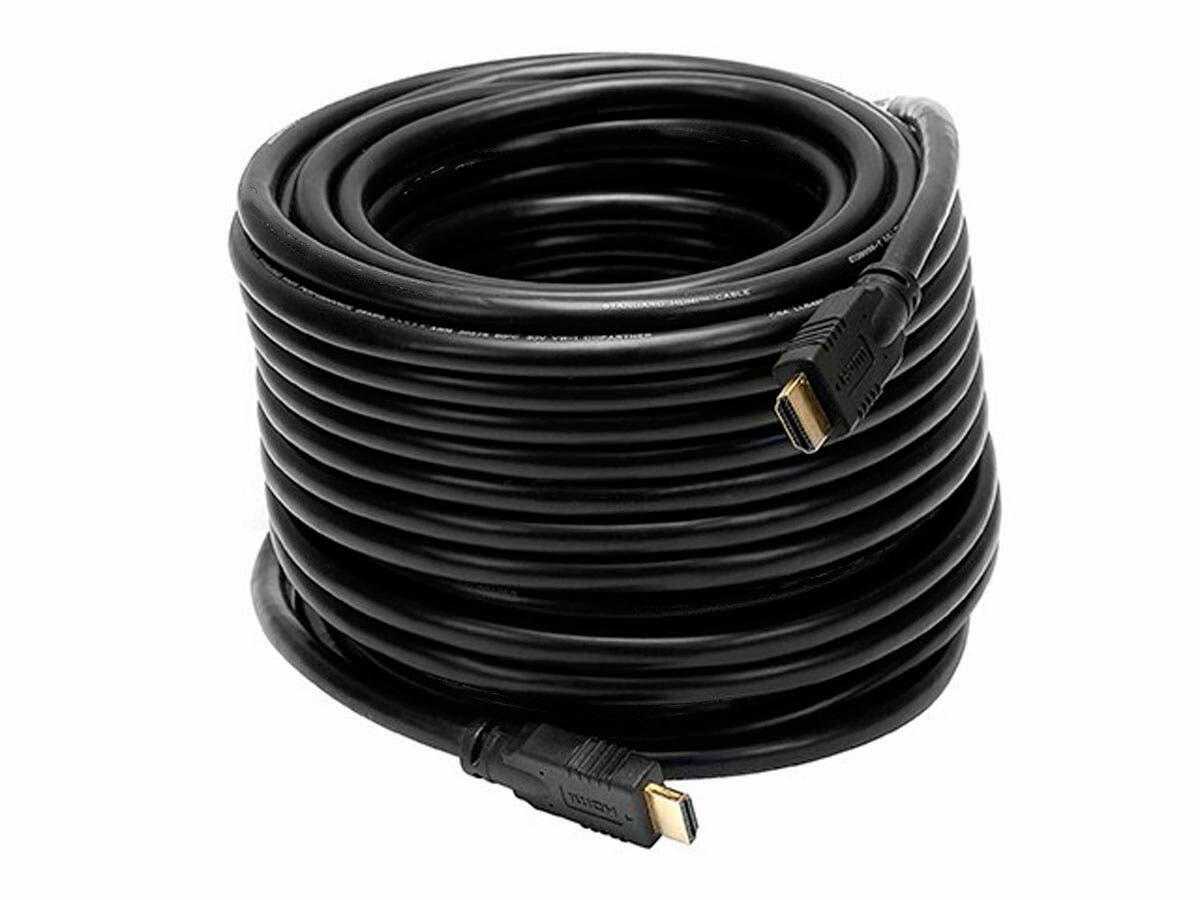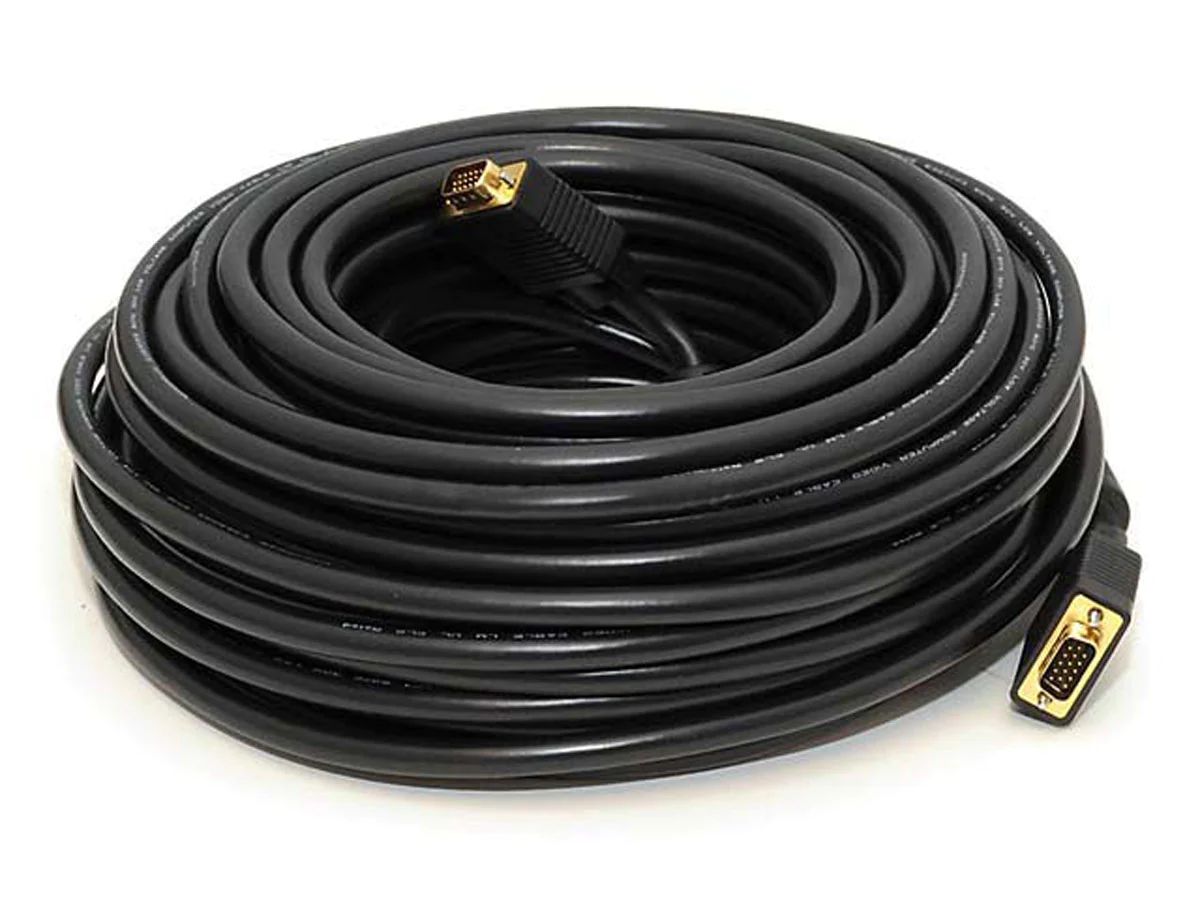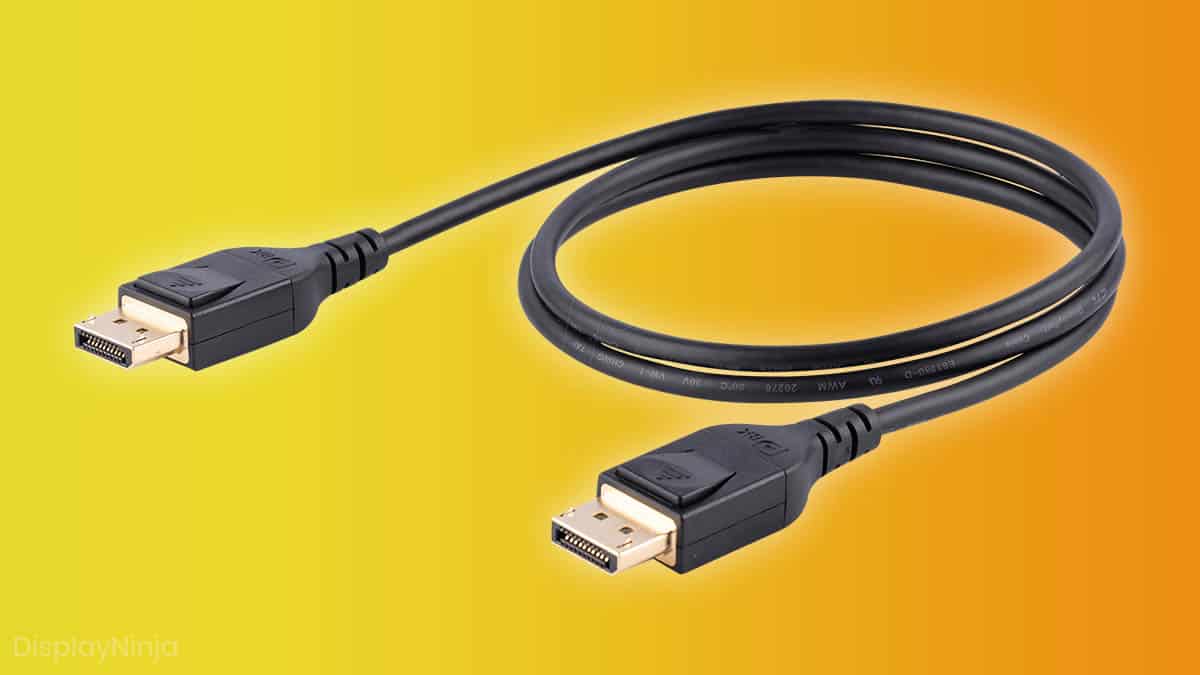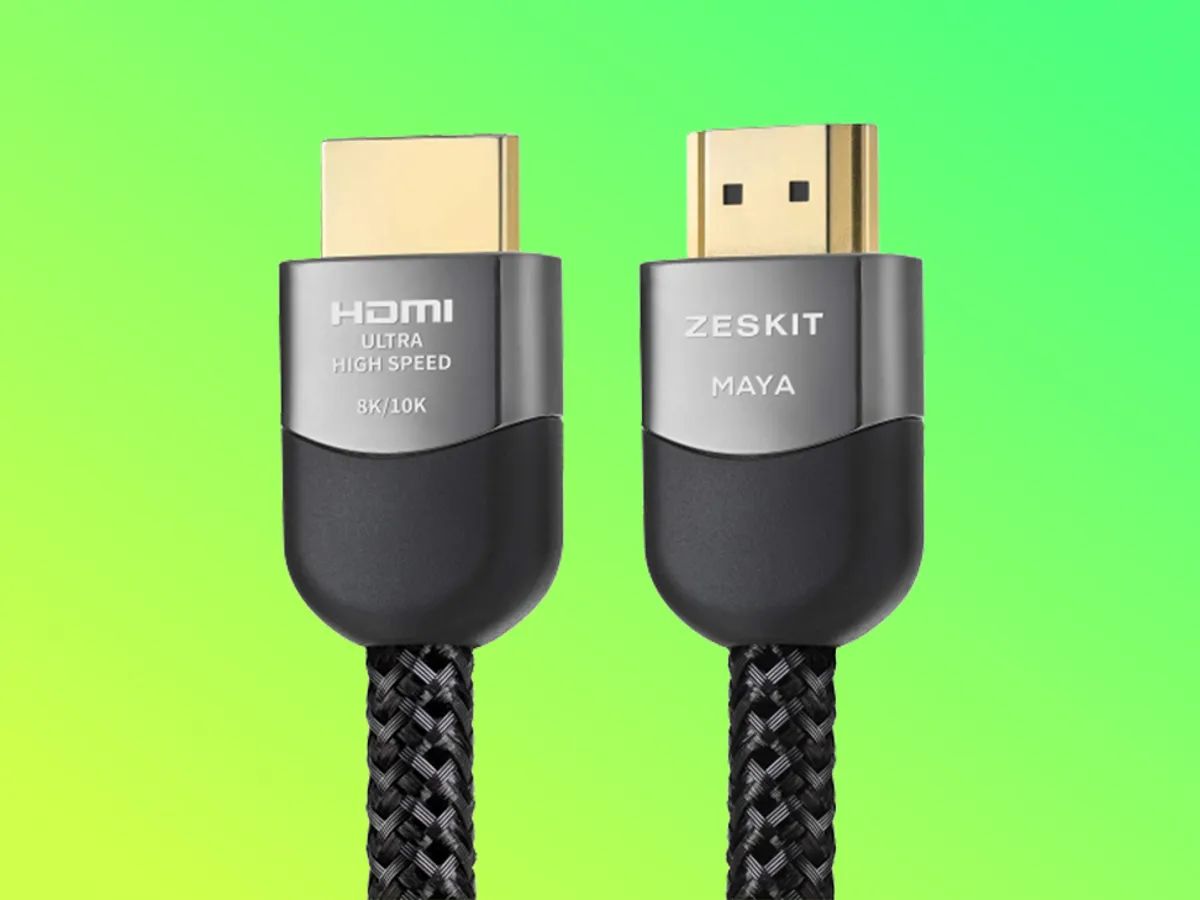Introduction
With the growing popularity of 4K resolution displays and content, it’s essential to have the right HDMI cable to ensure a seamless and high-quality viewing experience. However, distinguishing between a regular HDMI cable and a 4K HDMI cable can be challenging for many consumers.
In this article, we will guide you through the process of determining whether an HDMI cable is capable of supporting 4K resolution. By understanding the key differences and knowing what to look for, you’ll be equipped with the knowledge to make an informed purchasing decision.
Before we dive into the details, let’s first clarify what exactly a 4K HDMI cable is.
A 4K HDMI cable is designed to handle the increased bandwidth required for transmitting 4K resolution content. 4K resolution, also known as Ultra HD, offers four times the resolution of Full HD, resulting in a more detailed and vibrant picture. To deliver this level of detail, the HDMI cable needs to support higher data transfer rates and have the necessary specifications to transmit the 4K signal accurately.
Now that we’ve covered the basics, let’s explore the differences between a regular HDMI cable and a 4K HDMI cable in the next section.
What is a 4K HDMI cable?
A 4K HDMI cable is specifically designed to support the transmission of 4K resolution content from a source device to a display. It is built with advanced technology and specifications to ensure that the high-quality 4K signal is delivered without any degradation or loss of visual fidelity.
The term “4K” refers to the resolution of the video being transmitted through the cable. It signifies that the video content has a resolution of 3840 x 2160 pixels, which is four times the resolution of traditional Full HD (1920 x 1080 pixels). This increased resolution results in sharper images, more vibrant colors, and finer details.
To accommodate the higher resolution and increased data transfer rates, a 4K HDMI cable is equipped with several features:
- High bandwidth: A 4K HDMI cable has a higher bandwidth capacity to support the transmission of the large amount of data required for 4K resolution. It ensures that the video signal is delivered without any loss of quality or visual artifacts.
- Enhanced shielding: To prevent electromagnetic interference and signal degradation, a 4K HDMI cable is equipped with improved shielding. It helps maintain a stable connection and ensures that the 4K signal is not affected by external factors.
- Upgraded connectors: 4K HDMI cables often feature gold-plated connectors that offer better conductivity and corrosion resistance. These connectors help maintain a reliable signal transmission and reduce the risk of signal loss.
- Compliance with HDMI standards: A 4K HDMI cable meets the latest HDMI specifications and standards, ensuring compatibility with 4K devices and enabling seamless connectivity across multiple devices.
It’s important to note that not all HDMI cables are capable of supporting 4K resolution. Regular HDMI cables may struggle to handle the increased bandwidth required for 4K content, leading to reduced image quality or even a complete loss of signal. Therefore, if you want to enjoy the full benefits of your 4K display, it’s crucial to use a dedicated 4K HDMI cable.
In the following sections, we will discuss how to identify a 4K HDMI cable and ensure that you are getting the right cable for your 4K devices.
How does a 4K HDMI cable differ from a regular HDMI cable?
While the physical appearance of a 4K HDMI cable may look similar to a regular HDMI cable, there are significant differences in their capabilities and specifications. Understanding these differences is crucial to ensure that you are using the right cable for your 4K devices. Here are the key distinctions:
- Bandwidth: One of the primary differences between a 4K HDMI cable and a regular HDMI cable is the bandwidth capacity. 4K content requires a higher data transfer rate to transmit the increased resolution effectively. A 4K HDMI cable is designed to handle the higher bandwidth demands, ensuring that the 4K signal is delivered without any loss of quality or visual artifacts.
- HDMI Version: Another important factor to consider is the HDMI version. 4K HDMI cables are typically built to support the latest HDMI versions, such as HDMI 2.0 or HDMI 2.1. These newer versions incorporate features like higher data transfer rates, support for HDR (High Dynamic Range), and enhanced audio formats, all of which are essential for a true 4K viewing experience. Regular HDMI cables, on the other hand, may not have the necessary specifications to handle these advanced features.
- Connectors: The connectors on a 4K HDMI cable are often optimized for better performance. They may feature gold-plated contacts or superior build quality to ensure a reliable connection and minimize signal loss. Regular HDMI cables may have standard connectors that are not specifically designed for the demands of 4K transmission.
- Shielding: 4K HDMI cables generally have enhanced shielding to minimize electromagnetic interference and reduce the risk of signal degradation. This shielding helps maintain a steady and stable connection, ensuring that the 4K signal is not affected by external factors. Regular HDMI cables may have less effective shielding, which can result in a weaker and less reliable signal.
- Length: The length of the cable can also impact its performance. Longer HDMI cables may experience more signal degradation due to the increased distance the signal needs to travel. It’s important to consider the length requirements based on the distance between your 4K devices and choose a high-quality 4K HDMI cable that can maintain the integrity of the signal over longer distances.
It’s worth noting that while a regular HDMI cable may work for lower resolution displays and content, it may not provide the necessary bandwidth and specifications to deliver a true 4K experience. Therefore, if you have a 4K television or monitor and want to enjoy the stunning visuals, it is highly recommended to use a 4K HDMI cable that is specifically designed and optimized for 4K content.
In the next sections, we will explore various methods to verify if an HDMI cable is indeed 4K compatible.
Checking the labeling and packaging
When you’re in the market for a 4K HDMI cable, one of the first things to look for is the labeling and packaging of the cable. Manufacturers often indicate the cable’s capabilities and specifications on the packaging to help consumers make informed decisions. Here are some key points to consider:
- 4K compatible: Look for clear indications that the cable is 4K compatible. This may be mentioned prominently on the packaging or displayed through labels such as “4K Ultra HD” or “Supports 4K resolution.” Ensure that the packaging explicitly states the cable’s ability to handle 4K content.
- HDMI version: The packaging should mention the HDMI version that the cable supports. Look for descriptions like “HDMI 2.0” or “HDMI 2.1” to ensure compatibility with the latest standards. These versions offer the necessary features and specifications for a seamless 4K viewing experience.
- High-speed: Ensure that the packaging mentions “high-speed” or “high-bandwidth” capabilities. High-speed cables are designed to handle the increased data transfer rates required for 4K content, ensuring that the signal is transmitted without any loss of quality.
- Length specification: The packaging should clearly state the cable’s length. Consider your setup requirements and choose a cable that is long enough to bridge the distance between your devices without compromising signal quality. Keep in mind that longer cables may require higher-quality construction to maintain optimal performance.
- Official logos and certifications: Look for official logos of HDMI Licensing LLC, which indicate that the cable has been tested and certified for compliance with HDMI standards. These logos include “HDMI Premium Certified Cable” and “HDMI Authorized Cable,” among others. These certifications give you confidence that the cable is capable of delivering the expected performance.
- Brand reputation and reviews: Consider the reputation of the brand and read user reviews about the cable. Reputable brands often invest in quality materials and manufacturing processes to ensure reliable performance. User reviews can provide valuable insights into the cable’s durability, reliability, and compatibility.
While checking the labeling and packaging is a helpful step, it’s essential to remember that the information provided may vary. Some cables may not have explicit labels or certifications but are still capable of supporting 4K resolution. In such cases, it’s important to consider other factors, such as the cable’s connectors, build quality, and compatibility with HDMI versions, to determine its suitability for 4K content.
In the next section, we will discuss how to examine the cable connectors to verify if it is a 4K HDMI cable.
Examining the cable connectors
Examining the connectors of an HDMI cable is another useful method to determine if it is a 4K HDMI cable. The connectors play a crucial role in maintaining a reliable and high-quality signal transmission. Here are some factors to consider when examining the cable connectors:
- Gold-plated connectors: Look for connectors that are gold-plated or have a high-quality metal coating. Gold-plated connectors offer better conductivity and corrosion resistance, ensuring a reliable connection and minimizing signal loss. These connectors are often found on 4K HDMI cables, as they provide enhanced performance and durability.
- Tight fit: Check if the connectors fit snugly into the HDMI ports of your devices. Loose or wobbly connectors can result in an unstable connection, leading to signal dropouts or reduced image quality. A 4K HDMI cable is designed to provide a secure and tight fit to maintain uninterrupted signal transmission.
- Robust build: Inspect the connectors for durability and sturdy construction. A well-built connector is less likely to suffer from damage or breakage that can impact signal integrity. Look for connectors that are solidly built and have strain relief mechanisms to prevent strain on the cable and connectors.
- Compatibility: Ensure that the connectors are compatible with the HDMI version required for 4K content. For example, HDMI 2.0 or HDMI 2.1 connectors are designed to support the higher data transfer rates and features required for 4K resolution. Verify that the connectors match the HDMI version specifications mentioned on the cable packaging.
- Additional features: Some HDMI cables may have additional features, such as Ethernet support or Audio Return Channel (ARC) capabilities. While these features aren’t directly related to 4K resolution, they can enhance the overall functionality and convenience of the cable.
By closely inspecting the cable connectors, you can gain valuable insights into the cable’s build quality and compatibility. A 4K HDMI cable will typically have connectors that are specifically designed to handle the demands of high-resolution content.
In the next section, we will explore how to verify the HDMI version of a cable, which is another important aspect to consider when determining if it is a 4K HDMI cable.
Verifying the HDMI version
Verifying the HDMI version of a cable is a crucial step in determining if it is a 4K HDMI cable. The HDMI version indicates the cable’s capabilities and compatibility with different features and resolutions. To verify the HDMI version, consider the following methods:
- Check the cable packaging: The packaging of the HDMI cable may mention the HDMI version it supports. Look for information such as “HDMI 2.0” or “HDMI 2.1” to ensure compatibility with the latest standards. These versions are designed to handle the higher data transfer rates and advanced features required for 4K resolution.
- Inspect the connectors: The connectors of the HDMI cable may have symbols or numbers that indicate the HDMI version. Look for labels such as “HDMI 2.0” or “HDMI 2.1” embossed on the connectors. These markings confirm the HDMI version supported by the cable.
- Consult the manufacturer’s website or documentation: If the cable packaging or connectors don’t provide clear information about the HDMI version, visit the manufacturer’s website or check the product documentation. Manufacturers often provide detailed specifications and compatibility information, including the HDMI version, for their products.
- Inspect the cable itself: Some HDMI cables may have the HDMI version printed directly on the cable itself. Look for numbers or symbols along the length of the cable that indicate the HDMI version. This information helps confirm if the cable is suitable for 4K resolution.
- Use an HDMI version checker: If all else fails, you can use an HDMI version checker tool or device. These devices can identify the HDMI version of a cable by analyzing the electrical signals transmitted through it. Simply connect the HDMI cable to the checker device, and it will display the detected HDMI version.
Verifying the HDMI version is essential to ensure that the cable is capable of supporting the higher bandwidth and specifications required for 4K resolution. Using a cable with an older HDMI version may result in compromised image quality or incompatible features.
In the next section, we will discuss how to test the cable with a 4K device to confirm its compatibility.
Testing the cable with a 4K device
After examining the labeling, packaging, connectors, and HDMI version of the cable, it is important to test it with a 4K device to confirm its compatibility. Testing the cable with a 4K device allows you to verify if it can transmit a 4K signal without any issues. Here’s how you can perform the test:
- Connect the cable: Plug one end of the HDMI cable into the HDMI output port of your 4K device, such as a 4K Blu-ray player or a 4K streaming device. Connect the other end to the HDMI input port of your 4K television or monitor.
- Set the device and TV: Turn on the 4K device and your television or monitor. Make sure both are set to the appropriate HDMI input source for your 4K device.
- Check for a 4K signal: Use the device’s settings menu or the television’s on-screen display (OSD) to confirm that a 4K signal is being received. Look for indicators such as “4K” or the actual resolution (3840 x 2160) on the display settings. This confirms that the cable is transmitting the 4K signal successfully.
- Watch 4K content: Play a 4K video or stream 4K content to test the cable’s performance. Observe the picture quality, color accuracy, and overall viewing experience. If the image appears clear, crisp, and vibrant without any noticeable artifacts or glitches, it indicates that the cable is working effectively with the 4K device.
- Monitor for issues: During playback, monitor the screen for any intermittent signal loss, screen flickering, or other visual anomalies. These issues may indicate a problem with the cable’s capability to handle the bandwidth required for 4K content.
Testing the cable with a 4K device provides a practical and real-world assessment of its compatibility and performance. If you encounter any issues with the picture quality or experience intermittent signal disruptions, it may be an indication that the cable is not suitable for 4K resolution.
If the cable performs well during the test and delivers a seamless 4K viewing experience, you can confidently use it with your 4K devices.
In the following section, we will summarize the key points discussed in this article.
Conclusion
When it comes to choosing the right HDMI cable for your 4K devices, it’s essential to look beyond the physical appearance and consider the cable’s capabilities and specifications. In this article, we have discussed various methods to determine if an HDMI cable is 4K compatible.
We started by understanding what a 4K HDMI cable is and how it differs from a regular HDMI cable. We highlighted the importance of higher bandwidth, HDMI version, connectors, shielding, and length in ensuring seamless 4K transmission.
We then explored the importance of checking the labeling and packaging of the cable for indications of 4K compatibility and HDMI version. Examining the cable connectors allowed us to assess the build quality, compatibility, and reliability. Verifying the HDMI version provided crucial information about the cable’s capabilities and its ability to support the bandwidth required for 4K content.
To finalize our evaluation, we emphasized the significance of testing the cable with a 4K device. This real-world testing allows you to confirm the cable’s compatibility, picture quality, and overall performance when transmitting a 4K signal.
By taking these steps, you can confidently select a 4K HDMI cable that meets your requirements and ensures a remarkable viewing experience with your 4K devices.
Remember to consider factors such as cable labeling, packaging, connectors, HDMI version, and real-world testing to make an informed decision. Investing in a high-quality 4K HDMI cable will ensure that you can fully enjoy the stunning visuals and immersive experience that 4K resolution has to offer.











